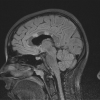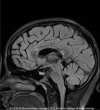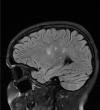Use of disease assessment tools to increase the value of case reports on Susac syndrome: two case reports
- PMID: 37046335
- PMCID: PMC10097450
- DOI: 10.1186/s13256-023-03838-9
Use of disease assessment tools to increase the value of case reports on Susac syndrome: two case reports
Abstract
Background: Susac syndrome is an immune-mediated, ischemia-producing, occlusive microvascular endotheliopathy that threatens the brain, retina, and inner ear. There is a need for disease assessment tools that can help clinicians and patients to more easily, accurately, and uniformly track the clinical course and outcome of Susac syndrome. Ideally, such tools should simultaneously facilitate the clinical care and study of Susac syndrome and improve the value of future case reports. To meet this need, two novel clinical assessment tools were developed: the Susac Symptoms Form and the Susac Disease Damage Score. The former is a comprehensive self-report form that is completed by patients/families to serially document the clinical status of a patient. The latter documents the extent of damage perceived by individual patients/families and their physicians. Both forms were initially trialed with two particularly representative and instructive patients. The results of this trial are shared in this report.
Case presentation: Patient 1 is a 21-year-old Caucasian female who presented with an acute onset of headache, paresthesias, cognitive dysfunction, and emotional lability. Patient 2 is a 14-year-old Caucasian female who presented with an acute onset of headache, cognitive dysfunction, urinary incontinence, ataxia, and personality change. Both patients fulfilled criteria for a definite diagnosis of Susac syndrome: both eventually developed brain, retinal, and inner ear involvement, and both had typical "snowball lesions" on magnetic resonance imaging. The Susac Symptoms Form documented initial improvement in both patients, was sufficiently sensitive in detecting a subsequent relapse in the second patient, and succinctly documented the long-term clinical course in both patients. The Disease Damage Score documented minimal disease damage in the first patient and more significant damage in the second.
Conclusions: The Susac Symptoms Form and the Disease Damage Score are useful disease assessment tools, both for clinical care and research purposes. Their use could enhance the value of future case reports on Susac syndrome and could improve opportunities to learn from a series of such reports.
Keywords: Case report; Clinical course; Disease assessment tools; Outcome; Susac syndrome.
© 2023. The Author(s).
Conflict of interest statement
The authors declare they have no competing interests.
Figures











References
Publication types
MeSH terms
LinkOut - more resources
Full Text Sources

